International affairs reporting varies significantly across countries, shaped by unique cultural, political, and economic contexts. These differences not only affect the presentation of information but also influence the narratives that are emphasized and the audiences that are targeted. Understanding these perspectives is crucial for grasping how global events are interpreted and perceived worldwide.
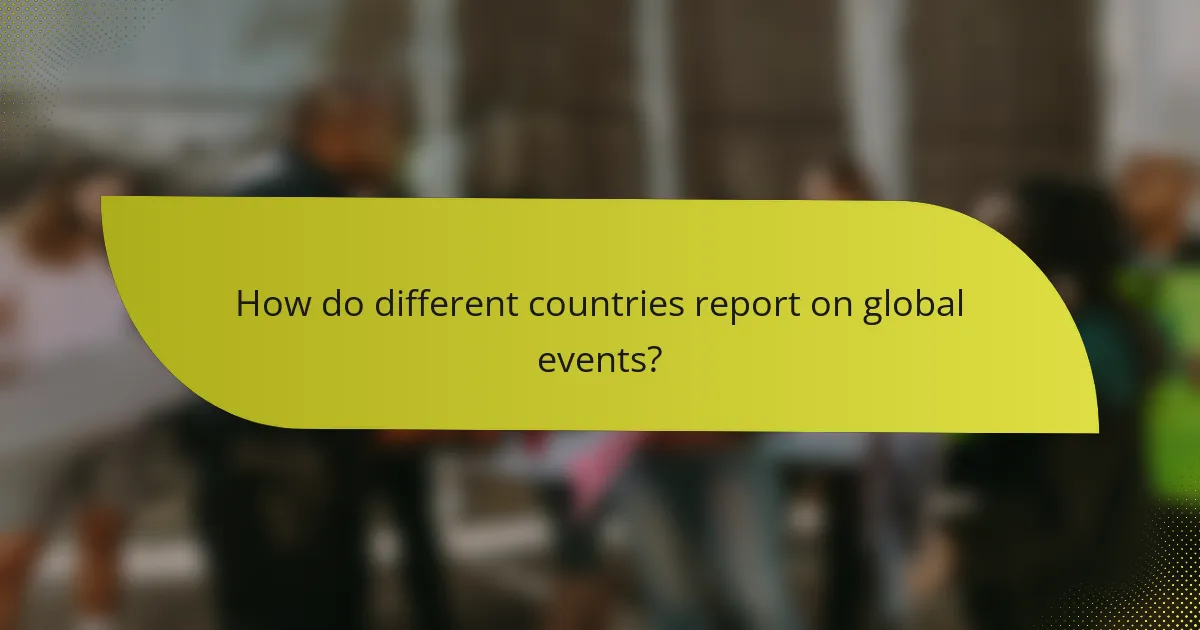
How do different countries report on global events?
Countries report on global events through various media perspectives shaped by cultural, political, and economic contexts. These differences influence how information is presented, the narratives emphasized, and the audiences targeted.
United States media perspectives
In the United States, media coverage often emphasizes individualism and personal stories, reflecting a focus on human interest angles. Major outlets like CNN, The New York Times, and Fox News may present global events with a lens of American values, often highlighting implications for U.S. interests.
Coverage can vary significantly between liberal and conservative outlets, leading to different interpretations of the same events. For instance, while one outlet may focus on humanitarian crises, another might emphasize national security concerns.
European Union reporting styles
European media tends to adopt a more collective perspective, often reflecting the diverse viewpoints of its member states. Outlets like BBC and Deutsche Welle provide comprehensive analyses that consider the broader implications for Europe as a whole.
Additionally, EU reporting often incorporates a regulatory framework, discussing how global events affect EU policies and regulations. This can include economic impacts, migration issues, and environmental concerns, providing a multifaceted view of international affairs.
Asian country viewpoints
Asian media coverage varies widely across the continent, influenced by political systems and cultural contexts. For example, Chinese media often presents a state-centric view, emphasizing national pride and stability, while Japanese outlets may focus on technological advancements and economic implications.
In countries like India, reporting can be more diverse, reflecting a range of opinions and regional perspectives. The emphasis may be on how global events affect local economies and social issues, such as employment and education.
African media coverage
African media often highlights local impacts of global events, focusing on issues such as development, health, and governance. Outlets may prioritize stories that resonate with local audiences, addressing how international policies affect African nations.
Coverage can be influenced by colonial histories and current political climates, leading to a mix of critical and supportive narratives regarding foreign involvement in Africa. This context shapes the way global events are reported and understood across the continent.
Latin American narratives
In Latin America, media coverage frequently reflects historical ties and socio-political dynamics within the region. Outlets may emphasize themes of solidarity and resistance, particularly in reporting on U.S. foreign policy and its implications for Latin American countries.
Coverage often includes grassroots perspectives, focusing on how global events impact local communities and economies. This approach can lead to a rich tapestry of narratives that highlight both challenges and successes in the face of international developments.
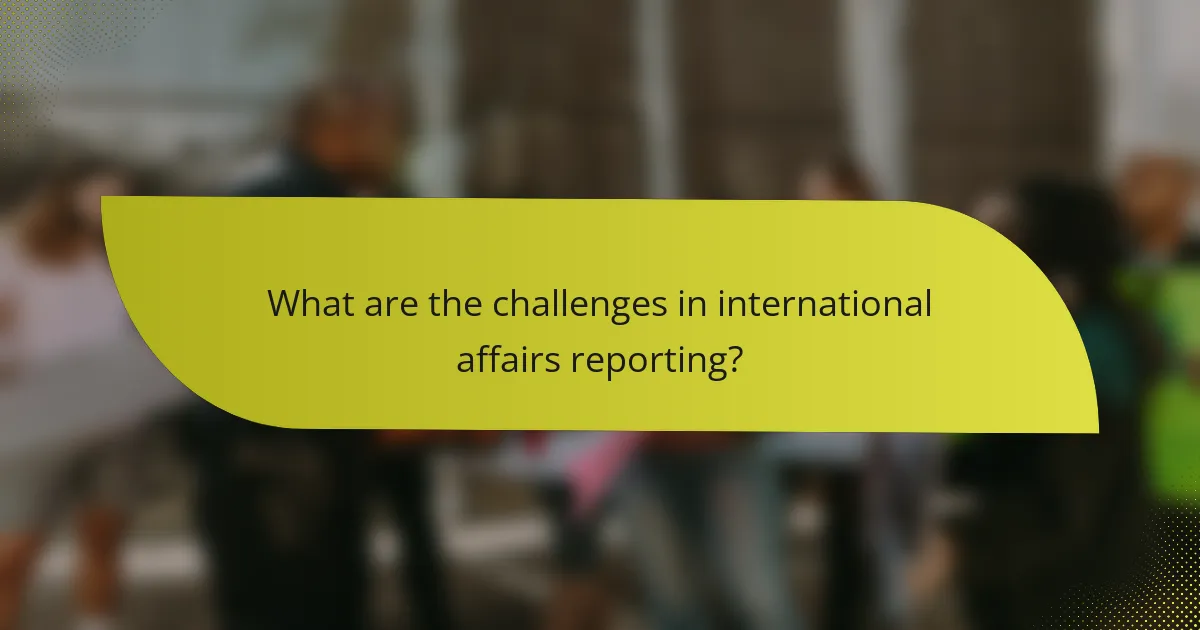
What are the challenges in international affairs reporting?
International affairs reporting faces several challenges that can distort the portrayal of global events. Key issues include political bias, access to reliable information, and cultural differences in interpretation.
Political bias in reporting
Political bias in reporting can significantly influence how international events are presented. Media outlets often have affiliations or leanings that shape their narratives, leading to skewed representations of facts and events.
To mitigate bias, journalists should strive for balanced reporting by including multiple perspectives and verifying sources. Readers should also seek diverse news sources to gain a more comprehensive understanding of global issues.
Access to reliable information
Access to reliable information is a major hurdle in international affairs reporting. Journalists may encounter restrictions in certain countries, limiting their ability to gather firsthand accounts or verify claims.
To navigate this challenge, reporters can utilize a variety of sources, including international organizations, NGOs, and local contacts. Cross-referencing information from multiple outlets can also enhance accuracy and credibility.
Cultural differences in interpretation
Cultural differences can lead to varying interpretations of the same event, complicating international affairs reporting. What is considered newsworthy or significant in one culture may be viewed differently in another.
Reporters should be aware of these cultural nuances and strive to present information in a context that resonates with diverse audiences. Engaging local experts can provide valuable insights into cultural perspectives and improve the quality of reporting.
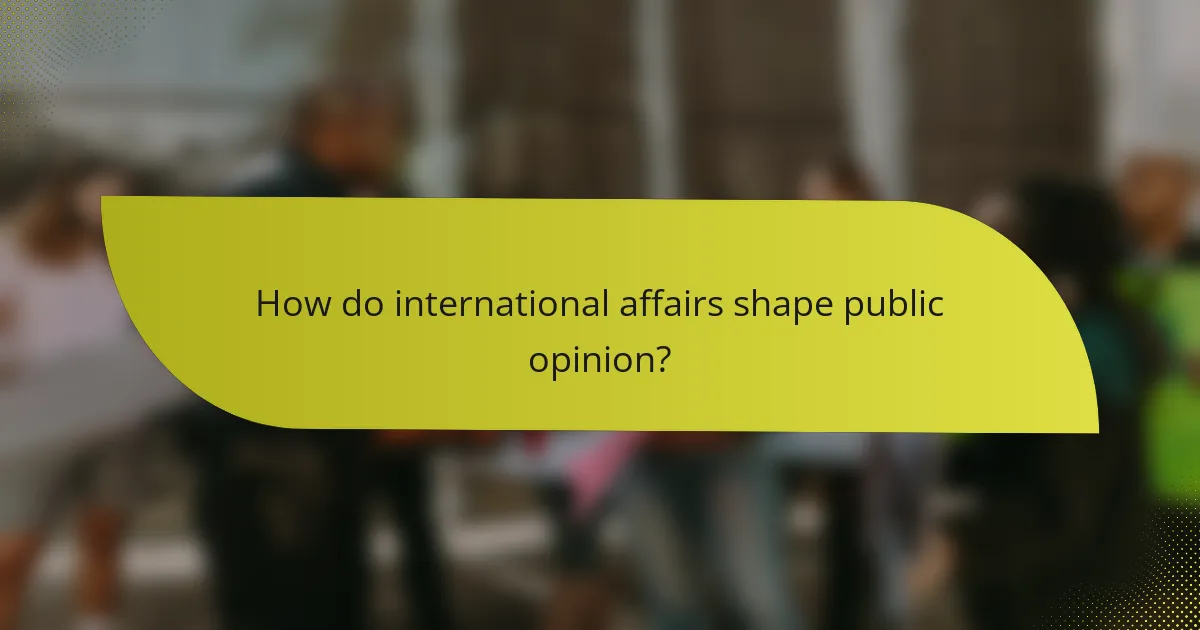
How do international affairs shape public opinion?
International affairs significantly influence public opinion by framing how people perceive global events and their implications. The portrayal of these events through various media channels can sway public sentiment and inform political attitudes.
Impact of media on public perception
The media plays a crucial role in shaping public perception of international affairs by selecting which stories to highlight and how to present them. For instance, extensive coverage of humanitarian crises can lead to increased public empathy and support for intervention, while minimal coverage may result in indifference.
Social media platforms further amplify this effect by allowing rapid dissemination of information and personal narratives, which can either bolster or undermine public trust in institutions. Misinformation can spread quickly, leading to skewed perceptions of events and policies.
Case studies of major global events
One notable example is the coverage of the Syrian Civil War, which has influenced public opinion regarding refugee policies in various countries. As images and stories of displaced individuals circulated, many nations faced pressure to accept refugees, altering their immigration policies.
Another case is the global response to climate change, where international agreements like the Paris Accord have shaped public discourse. Media framing of climate events can mobilize public support for environmental policies, demonstrating how international affairs can directly impact local attitudes and actions.

What frameworks guide international reporting?
International reporting is guided by various frameworks that ensure accuracy, fairness, and ethical standards. These frameworks include ethical guidelines for journalists and established international reporting standards that help maintain credibility across borders.
Ethical guidelines for journalists
Ethical guidelines for journalists emphasize principles such as truthfulness, accuracy, and impartiality. Journalists are expected to verify information before publication and avoid conflicts of interest that could compromise their reporting.
For instance, the Society of Professional Journalists (SPJ) outlines a code of ethics that encourages journalists to seek the truth and report it, minimize harm, and act independently. Adhering to these guidelines helps build trust with audiences and enhances the integrity of international news coverage.
International reporting standards
International reporting standards provide a framework for consistency and reliability in news coverage across different countries. These standards often include guidelines on sourcing, fact-checking, and the representation of diverse perspectives.
Organizations like the International Press Institute (IPI) advocate for standards that promote freedom of expression while ensuring responsible journalism. For example, reporters should strive to present multiple viewpoints on contentious issues, which fosters a more comprehensive understanding of global events.
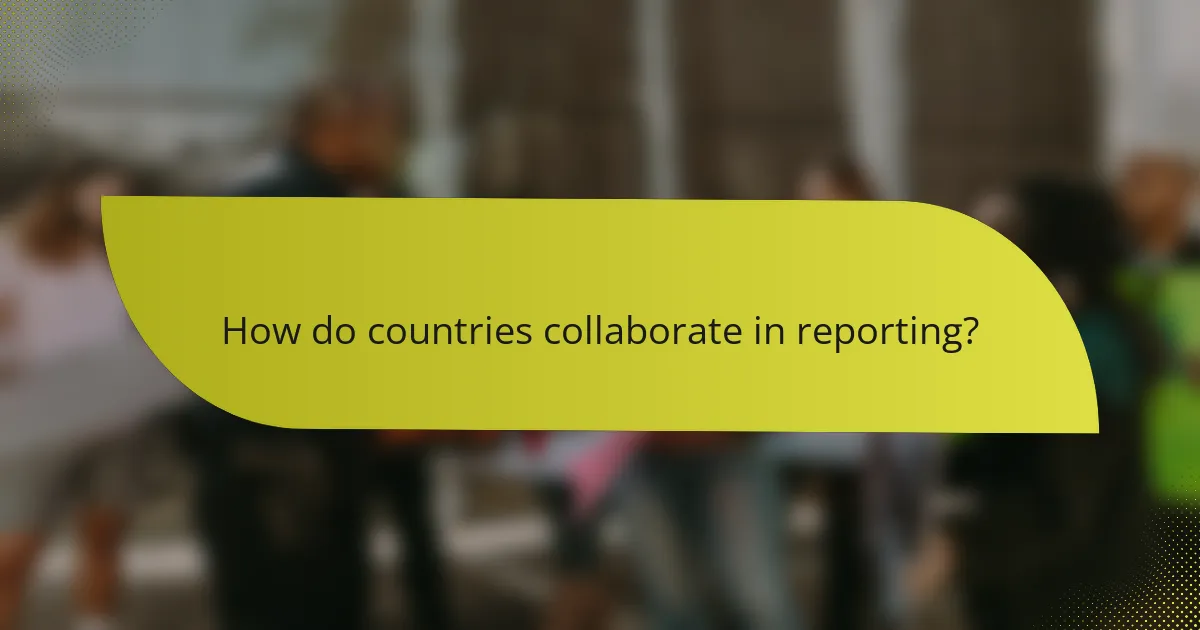
How do countries collaborate in reporting?
Countries collaborate in reporting by forming networks and initiatives that facilitate the sharing of information and resources. This collaboration enhances the quality and reach of journalism, allowing for a more comprehensive understanding of global events.
International journalism networks
International journalism networks consist of organizations and platforms that connect journalists across borders. These networks enable members to share stories, resources, and expertise, fostering a collaborative environment that enhances reporting on global issues.
Examples of such networks include the International Consortium of Investigative Journalists (ICIJ) and the Global Investigative Journalism Network (GIJN). These organizations often provide training, resources, and opportunities for journalists to work together on cross-border investigations.
Cross-border reporting initiatives
Cross-border reporting initiatives focus on specific issues that transcend national boundaries, such as climate change, human rights, and migration. These initiatives encourage journalists from different countries to collaborate on stories that require a multi-faceted perspective.
For instance, the European Journalism Centre runs projects that support cross-border reporting on topics relevant to the European Union. These initiatives often involve funding, training, and networking opportunities to help journalists produce impactful stories that resonate across borders.
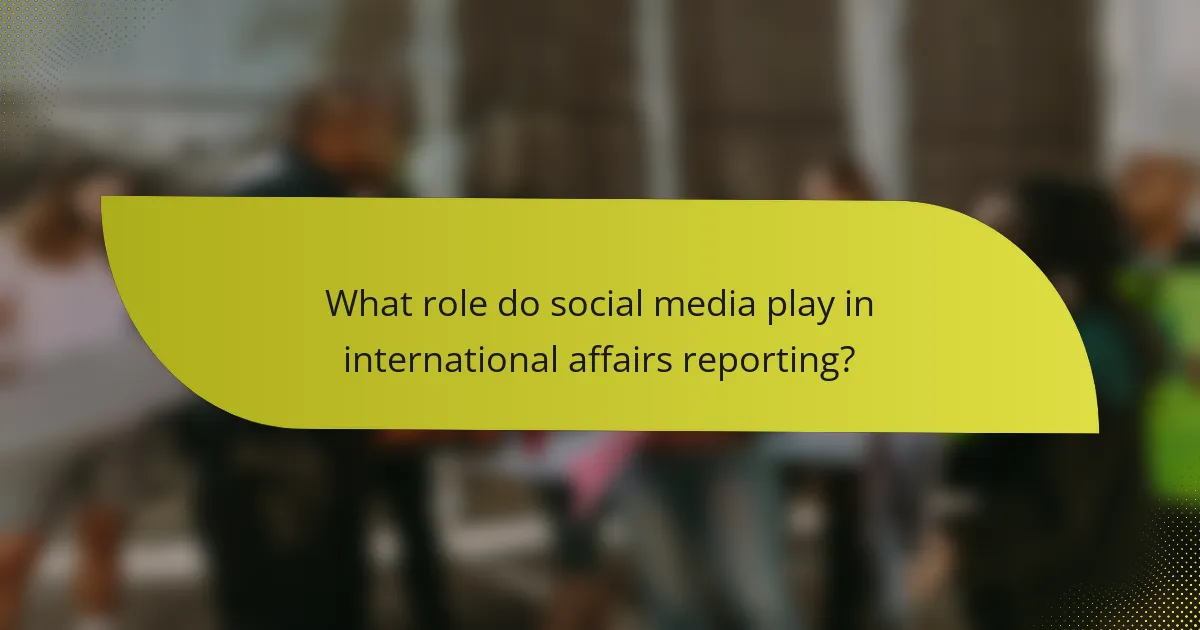
What role do social media play in international affairs reporting?
Social media significantly shapes international affairs reporting by providing real-time updates and diverse perspectives from around the globe. These platforms enable journalists and the public to share information quickly, but they also raise concerns about accuracy and reliability.
Influence of platforms like Twitter
Platforms like Twitter act as vital channels for disseminating news and opinions on global events. Journalists often use Twitter to break stories, share live updates, and engage with audiences, allowing for immediate feedback and interaction.
Moreover, Twitter’s character limit encourages concise communication, which can lead to the rapid spread of key information. However, this brevity can sometimes oversimplify complex issues, necessitating careful interpretation by both reporters and readers.
Challenges of misinformation
Misinformation poses a significant challenge in international affairs reporting, particularly on social media. False narratives can spread quickly, often outpacing accurate reporting, which can mislead audiences and influence public opinion.
To combat misinformation, journalists should verify sources and cross-check information before sharing. Utilizing fact-checking tools and collaborating with credible organizations can help ensure the accuracy of reported information, fostering a more informed public discourse.
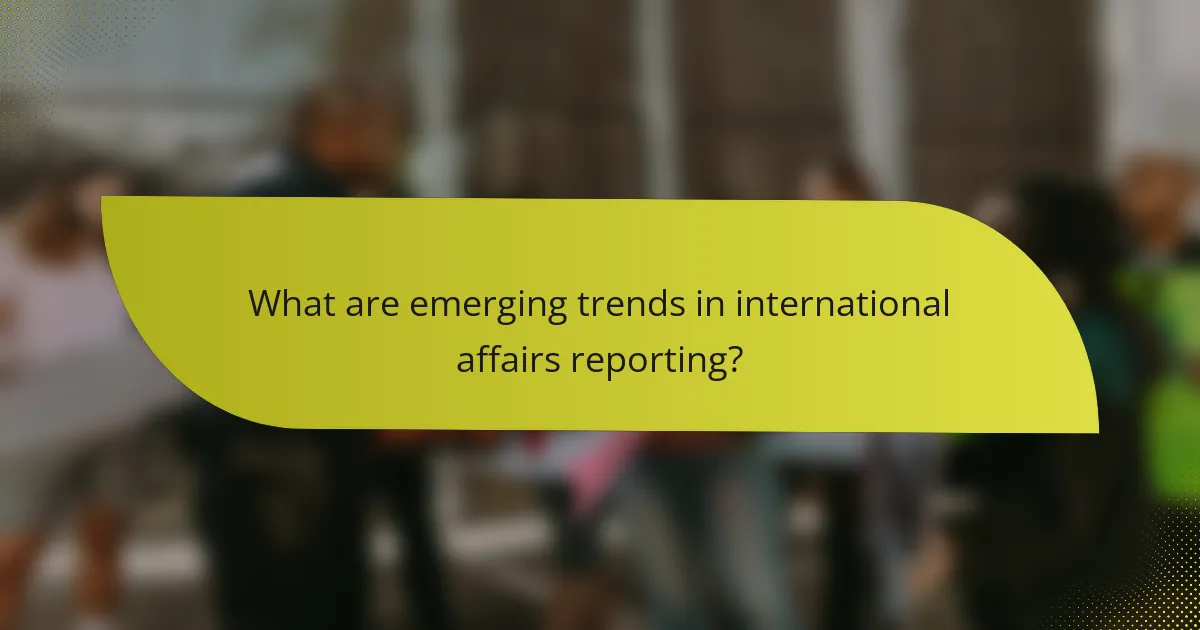
What are emerging trends in international affairs reporting?
Emerging trends in international affairs reporting include increased digitalization, a focus on local perspectives, and the rise of multimedia storytelling. These trends reflect the evolving landscape of global communication and the demand for more nuanced and accessible coverage of international events.
Digital Transformation in Reporting
The digital transformation in international affairs reporting is characterized by the shift from traditional print media to online platforms. News organizations are leveraging social media, podcasts, and video content to reach wider audiences and engage them in real-time discussions. This shift allows for quicker dissemination of information and greater interaction with readers.
Journalists now utilize data analytics to understand audience preferences, tailoring content to meet the interests of specific demographics. This trend emphasizes the importance of adaptability in reporting methods to keep pace with changing consumer habits.
Local Perspectives on Global Issues
There is a growing emphasis on local perspectives in international affairs reporting, as news outlets recognize the value of contextualizing global events within local frameworks. This approach helps audiences relate to international issues on a personal level, fostering a deeper understanding of their implications.
For example, coverage of climate change may include local impacts on agriculture or public health, making the global issue more relevant to regional audiences. This trend encourages journalists to collaborate with local experts and communities to provide richer, more informed narratives.
Multimedia Storytelling
Multimedia storytelling is becoming a cornerstone of international affairs reporting, combining text, images, video, and interactive elements to create immersive experiences. This approach enhances engagement and helps convey complex stories in a more digestible format.
For instance, a report on a conflict might include interactive maps, interviews with affected individuals, and video footage to provide a comprehensive view of the situation. As technology advances, the potential for innovative storytelling methods continues to expand, offering new ways to connect with audiences.
